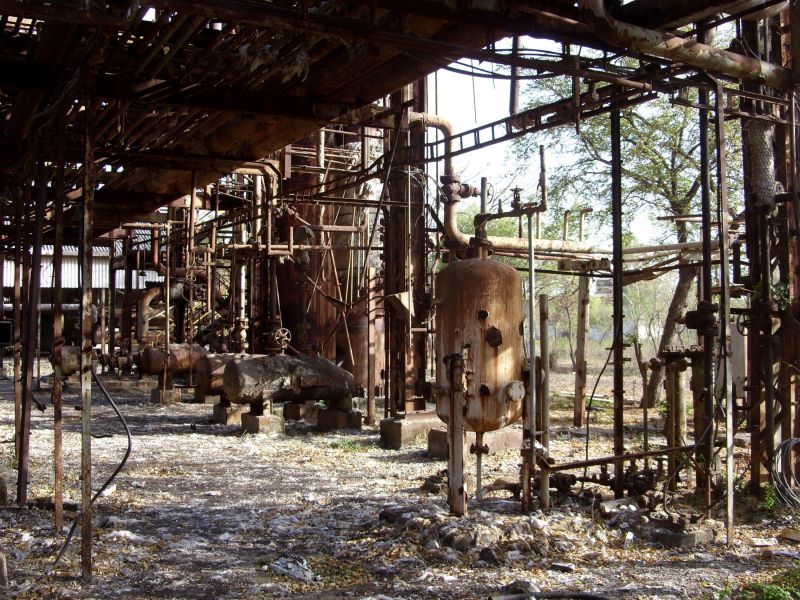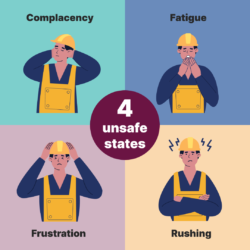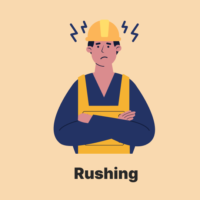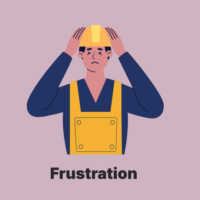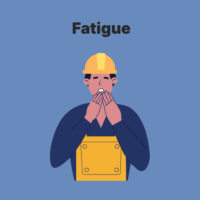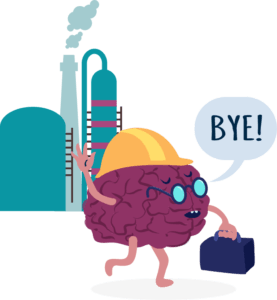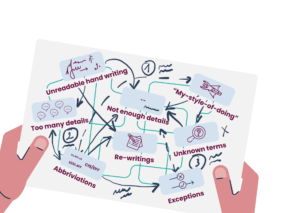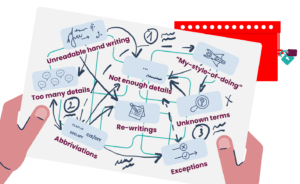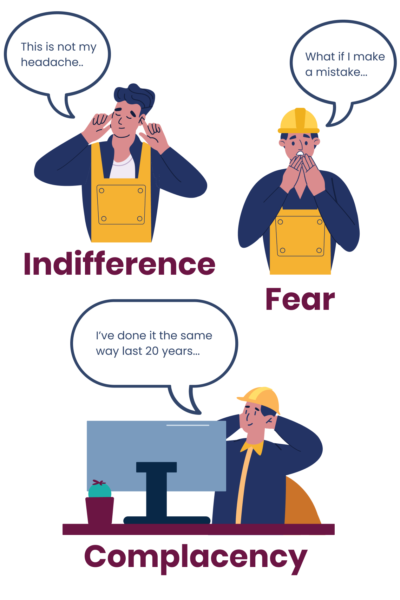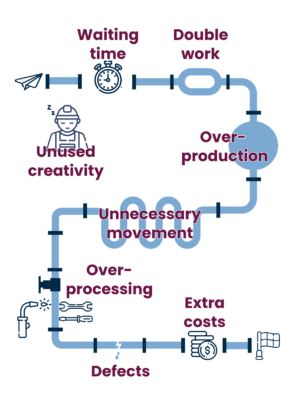“The secret of change is to focus all of your energy not on the fighting the old, but on building the new.”
Socrates
Deep dive into your Permit-to-Work effectiveness
Investigate the crucial process during your first 90-days at the HSE position
No matter how many years of experience in HSE are behind your back, starting a new role is like being dropped into the middle of a complex puzzle. Every piece seems crucial, but the overall picture still needs to be discovered.
This is getting even harder with all the burden placed on safety professionals, who are seen as guardians and are expected to have all the answers and solutions.
The permit-to-work system is one of the puzzle pieces to be investigated and understood in and out.
We at Unite-X have spent over 20 years supporting HSE experts, embracing the fact that the permit-to-work is more than just a procedure. It is a snapshot of the operational heartbeat, revealing inefficiencies, highlighting risks, and whispering stories of near-misses.
This article invites you to question the status quo of the permit-to-work process that you, as a new HSE, inherited from your predecessors.

On the wave of change
Understanding the permit-to-work system is crucial in the first 90 days. Why? Let’s map this story with the typical onboarding journey of HSE expert (or any other professional) at new place.
What do we do first 90-day usually? We orient ourselves in what do have available, we establish long-term and short-term goals, we get engaged with team mates and all stakeholders and we draft out plans and roadmaps ahead.
However, the processing industry is inherently conservative, prioritizing reliability over rapid change. This cautious approach is understandable, but it can sometimes hinder improvement.
As a new person, you are likely to be more enthusiastic about change because you can bring a fresh perspective and experiences, you have high expectations that aren’t tied to the old ways, and you are likely eager to make your mark.
A permit-to-work that you now own might harbor hidden risks and costs, so your goal now is to strike a balance between safety and progress.
By closely examining the permitting process during your onboarding, you can identify quick wins and build a foundation for more significant changes.
Looking for red flags and opportunities

This article will delve into nine critical areas that should be examined during the first 90 days of a new HSE role to identify potential red flags within a permit-to-work system and explore opportunities for improvement. Let’s embark on this journey to shine a light on the often-hidden corners of the permit-to-work process.
The topics of investigation posed in this article are intentionally designed to spark critical thinking and challenge conventional approaches to permit-to-work management.
They also align with the principles of Operational Safety Excellence by emphasizing efficiency, data-driven decision-making, continuous improvement, and employee empowerment.
1. Understanding the true cost of a permit
Every permit you hand out is a slice of operational expenditure. It is essential to quantify this cost accurately. Without a clear understanding of the permit’s financial impact, it’s difficult to justify investments, get buy-in for permit-related initiatives, and hit personal targets.
Solutions:
- Can you assign a monetary value to a permit, considering factors such as administrative time, equipment downtime, and resource allocation?
- Does your current system allow you to track and analyse the operational costs associated with permits, from creation to closure?

50% of HSE managers do not know the actual cost of their Permit-to-Work process.
2. Balancing waiting time and hands-on time
Though often tolerated in the HSE community, excessive waiting time leads to frustration, errors, and reduced productivity. By understanding the waiting time ratio to hands-on time, you can implement strategies to streamline the process and maximize productivity.
Solutions:
- Time Breakdown: Analyse the average time spent on a permit, differentiating between waiting time and actual work time.
- Waste Identification: Identify non-value-adding activities within the permit process that contribute to waiting time.

Only 16% of HSE managers state they always know the hands-on time vs preparation time.
3. Visibility and control
Effective permit management requires a clear and up-to-date picture of their status. A system that provides real-time information on permit stages, assigned personnel, and progress is crucial for efficient operations.
Solutions:
- Planning: Anticipate needs, set timelines, and allocate workloads.
- Proactive Monitoring: Identify potential issues or delays before they escalate.
- Decision Making: Make informed decisions about permit priorities and workload.

Only 50% of HSE managers say they always know what is happening when and what is coming soon.
4. Benefiting from past experiences
Repetitive tasks offer an opportunity to improve efficiency and safety through knowledge sharing. Reusing and refining permits can enhance safety, reduce errors, and improve overall performance.
Solutions:
- Knowledge capture: Implement a system to document lessons learned and best practices from previous permits.
- Continuous improvement: Set up the process of engaging experts from shop floor people to improve templates

Using templates is a common practice in the industry. But what if the quality of your template is low? Do you multiply low quality, then?
5. Permit retrieval and analysis
Access to historical permit data is essential for audits, incident investigations, performance analysis, and continuous improvement. A well-organized permit archive is a valuable resource that can support informed decision-making and prevent the recurrence of ineffective actions.
Solutions:
- Data accessibility: Permits are electronically stored and easily searchable.
- Information retention: Critical information is captured and preserved for future reference.
- Data analysis: Tools are available to extract valuable insights from permit data.

Only 1/3 of HSEs claim they can always easily find what they seek.
6. Minimizing permit errors
Permit errors can have serious consequences. Less dramatically focusing on error prevention and analysis, organizations can improve permit quality and reduce the risk of incidents.
Solutions:
- Error analysis: Track the types of errors that occur and their root causes.
- Preventive measures: Implement measures to address common error points, such as clear extra checks and 4-eyes principles.
- Continuous improvement: Regularly review the permit process to identify and eliminate potential error sources.

16% of HSE say permits are rarely done first-time-right.
7. Comprehensive hazard assessments
A thorough hazard assessment is fundamental to a safe permit.
However… check the stats to the right ->
Solutions:
- Standardize hazard assessment Process: Implement a structured methodology using detailed checklists, risk matrices, and digital tools.
- Empower workforce: Equip employees with the knowledge and tools to participate in hazard assessments, fostering a proactive safety culture.

Only 33% of HSE confirmed they are confident that all the correct hazards and safety measures are captured in the permit.
8. Leading Performance Indicators
Key performance indicators (KPIs) should provide insights into the effectiveness of the permit-to-work system. However, we need to track metrics that spot causalities, not correlations, that provide early signals, not historical facts.
Solutions:
- Relevant metrics: Select KPIs that align with safety objectives and operational goals.
- Actionable insights: Use KPIs to identify trends, problem areas, and opportunities for improvement.

50% of HSEs say their KPIs usually signal problems. How about the rest 50%?
9. Empowering the workforce
Employee involvement is crucial for continuous improvement. By engaging your peers, you can tap into a rich source of support and creativity and, thus, share ownership and responsibility.
Solutions:
- Open communication: Establish a process for employees to share their ideas and concerns about the permit process.
- Training and development: Provide employees with the necessary knowledge and skills to contribute to process improvement.

16% of HSEs say that employees are not engaged in the process and are unwilling to owe it.
Conclusion
By diving deep into the complexities and imperfections of the system you inherited during the initial phase of a new HSE role, you can build a solid foundation for your success in the organization.
You can uncover concealed costs, inefficiencies, and potential hazards, which can help you quickly achieve the goals of the first phase of your employment.
A well-managed, improved permit-to-work system with a data-centric approach and employee involvement is more than just a compliance obligation; it is a strategic advantage for you and your organization.






